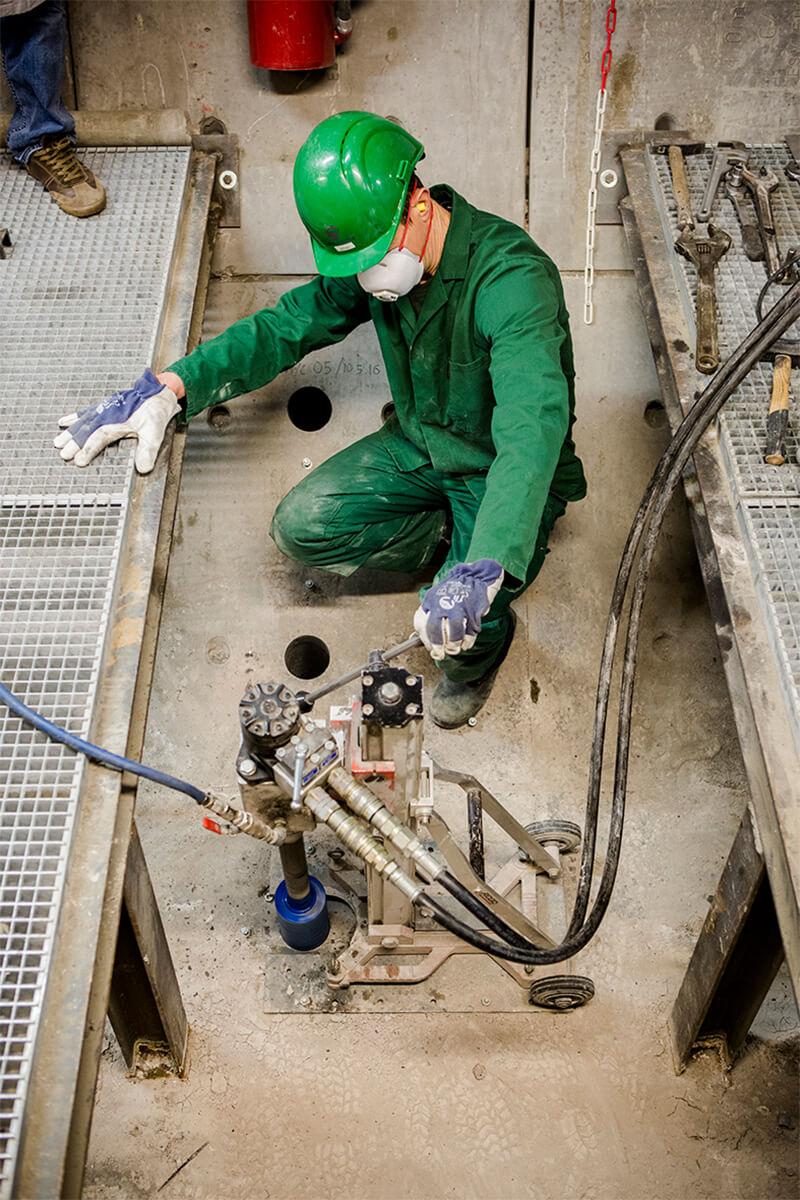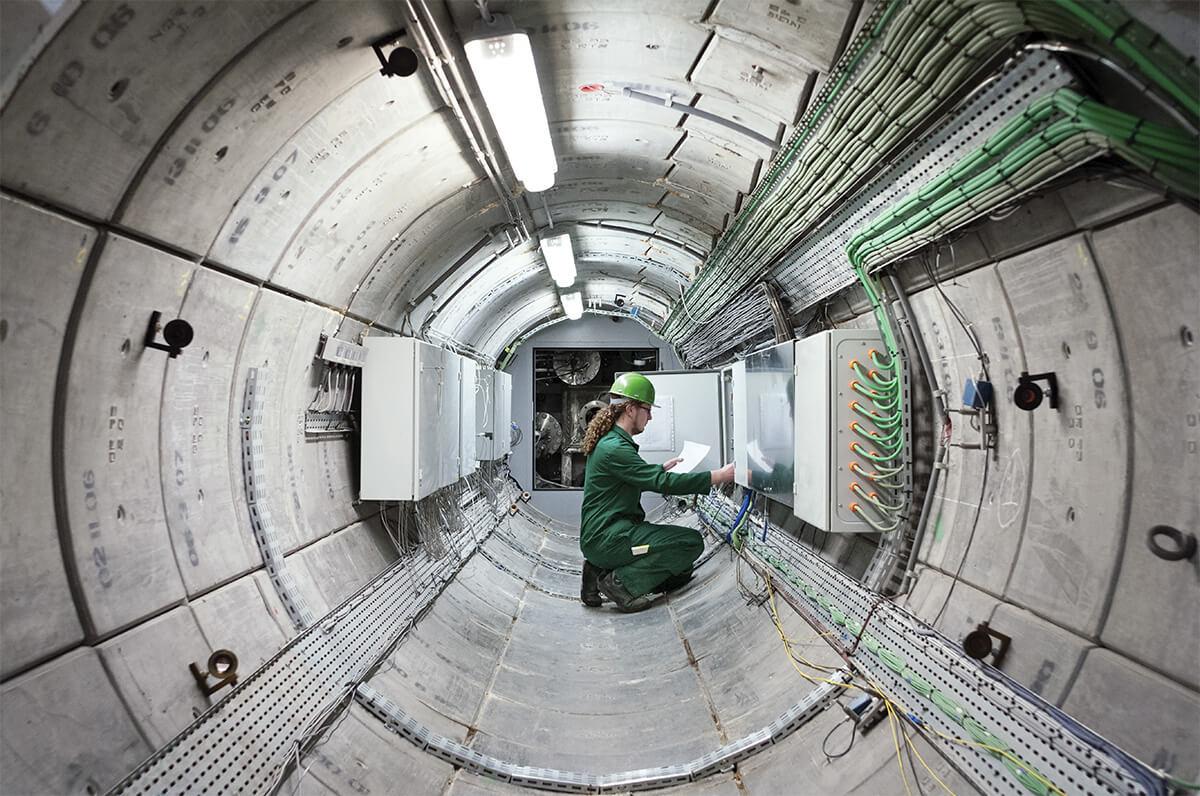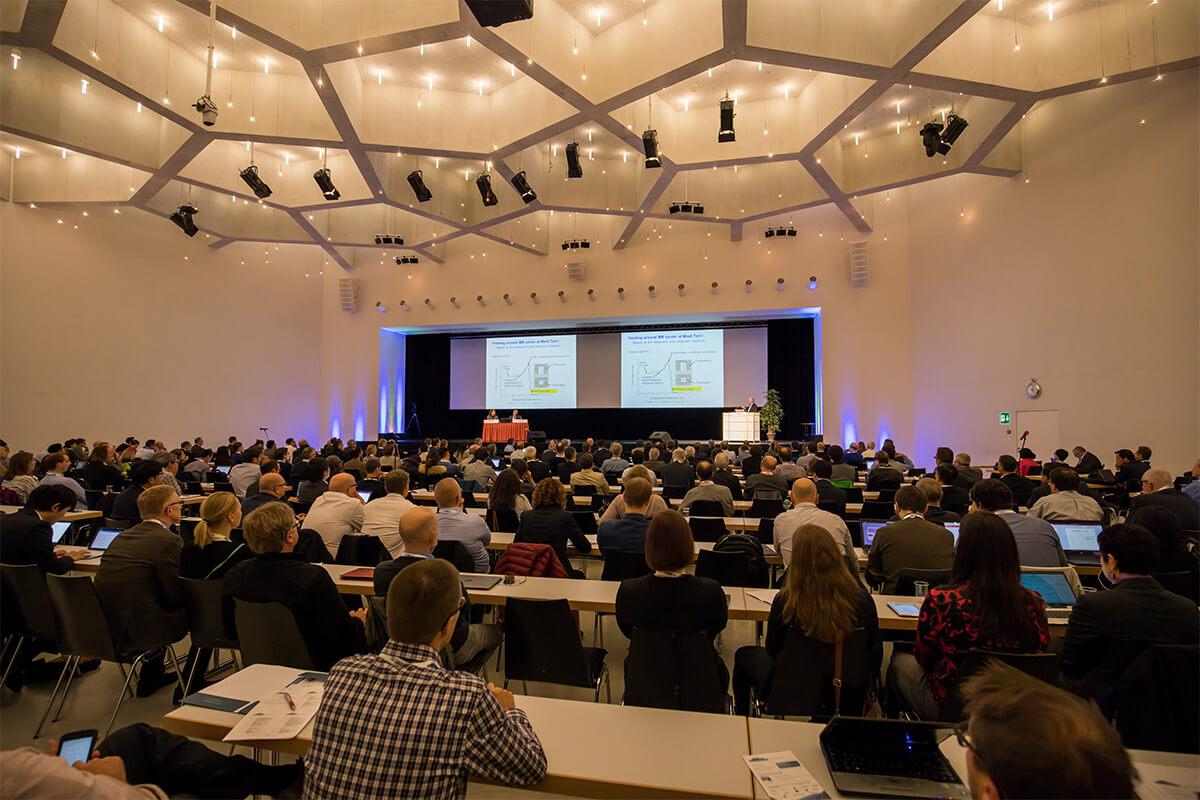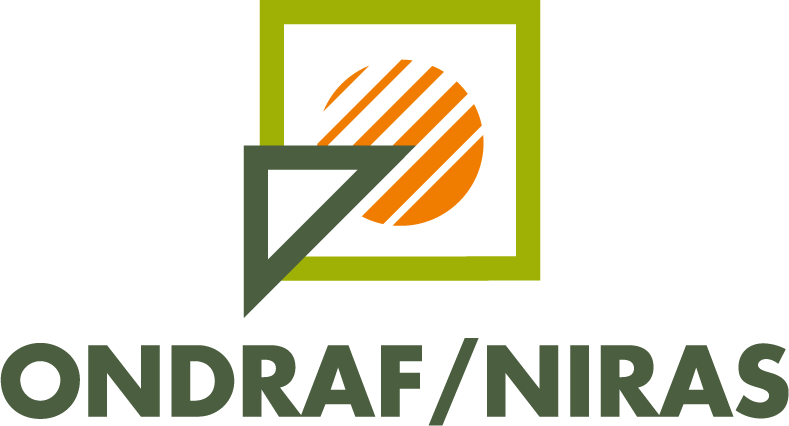Research
Research basis
Who conducts research on deep disposal?
With today's knowledge, deep disposal is globally considered as the only way to safely isolate high-level and/or long-lived radioactive waste from humans and the environment in the very long term. Research into the long-term management of this waste started in our country in 1974 by the nuclear research centre SCK CEN. About ten years later, this was brought under the responsibility of ONDRAF/NIRAS.

What is the basis of this research?
This research is based on an extensive Research, Development and Demonstration (RD&D) programme and focuses on poorly indurated clay as a potential host rock for a deep disposal facility. ONDRAF/NIRAS carries out part of this research and entrusts other research to Belgian and foreign scientific partners (universities, research centres, engineering firms, industrial partners, etc.). We determine the needs and scope of all studies, discuss the results and ensure that all dimensions of the programme are integrated in order to build a safe disposal facility. Since the early 1980s, our research programme has used the underground laboratory HADES in Mol, the construction of which was initiated by SCK CEN.
Research on radioactive waste management follows an open and scientific approach internationally. Knowledge and experience are shared, resources are pooled and results are published in scientific literature and subjected to peer review. For example, ONDRAF/NIRAS' RD&D programme is based on knowledge that goes far beyond that acquired in the context of Belgian research. We therefore work very closely with our sister organisations and various international institutions.
Underground laboratory
Why was an underground laboratory built in our country?
Subsurface research provides an opportunity to study the safety functions of a disposal system in real conditions and demonstrate its technical feasibility. In this way, the expertise, which will be needed to realise a deep disposal facility that meets all safety conditions, can be complemented by in situ research.
Who conducts research at HADES?
For more than 40 years, scientists have conducted research at HADES in Mol, the oldest laboratory in Europe built in clay. The lab is located at a depth of 225 metres and is accessible via two access shafts. The gallery connecting the two shafts is about 150 metres long. ONDRAF/NIRAS manages and operates HADES in partnership with the SCK CEN research centre. Since 1995, these activities have been carried out under the banner of the EURIDICE economic interest grouping. Both the laboratory and the research that takes place there are internationally renowned. However, no radioactive waste will ever be stored at HADES itself.
What results has this research already yielded?
Thanks to that laboratory, ONDRAF/NIRAS has acquired a lot of expertise in excavation and construction techniques in poorly indurated clay. We also conducted research into the behaviour of clay around the galleries disturbed by the excavations. The results confirmed the plastic nature of the clay as the cracks closed again by themselves. The conclusion is therefore clear: industrial construction of an underground disposal facility in poorly indurated clay is technically possible with currently available technology.
What is the purpose of the experiments conducted in HADES?
The experiments in HADES make it possible to collect information on the characteristics of the subsurface in which a disposal facility could be built. They also provide an opportunity to observe and understand the clay's interaction with radioactive substances and engineered barriers. It is important to investigate these characteristics and interactions because the mechanical and chemical properties of the clay layer at a depth of 225 metres differ strongly from those at the earth's surface.

Experiments
What experiments take place at HADES?
HADES is a licensed Class II nuclear research facility, allowing us to use a variety of radioactive sources and tracers there. This enables us to conduct experiments with radioactive substances under real conditions. The research is also complemented by experiments in above-ground laboratories and digital simulations to predict longer-term results. Large-scale subsurface demonstration tests are also being conducted to confirm the results of the small-scale experiments and refine the predictive models.
The underground laboratory houses hundreds of measuring instruments. They are used during experiments or construction work to measure, for example, water pressure, temperature and deformations in various locations. After being installed in the clay, the measuring instruments are often inaccessible. In addition, they must be waterproof and able to withstand intense pressure. Numerous sensors have therefore been specially adapted and customised.
What does the PRACLAY heating experiment consist of?
The large-scale PRACLAY heating experiment started in 2014 and mimics the heat emitted by high-level waste. This study consists of heating an individual 30-metre-long gallery for 10 years at a constant temperature of 80°C at the point where the gallery wall and clay meet. Researchers then study the impact of that heat on the clay. Among other things, they measure the pressure and temperature in the clay, as well as the pressure and chemical evolution of the pore water in the clay. All the already obtained results confirm the existing knowledge about the behaviour of clay when heated. In particular, they also show that the properties that make poorly indurated clay suitable as host rock are retained after prolonged exposure to heat.

What research takes place on the surface?
A significant part of the research takes place in above-ground laboratories. Scientists there study the mechanical behaviour of clay in specially designed test setups or measure the migration rate of radioactive substances in clay in a more controlled environment. For these above-ground tests, samples of Boom Clay are used that have been disturbed as little as possible. These are taken through so-called core drilling.
Why are digital simulations important for this study?
It is essential to demonstrate that a deep disposal facility remains safe even in the longer term. To do so, scientists rely on digital models, among other things, which include all components of the disposal system and simulate experiments of particularly long duration. The results of the digital simulations are compared with those of real experiments. Based on this, researchers can further refine both simulations and experiments. Thus, the digital models help investigate the long-term behaviour of the disposal facility and make it even safer.
Future research
What research is needed in the future?
On the one hand, the RD&D programme allows the acquired knowledge and experience to be confirmed, refined and integrated to reduce remaining uncertainties and increase safety margins. On the other hand, the RD&D programme must be flexible and adaptable according to the evolution of the technical, scientific and societal context. Indeed, the development of a deep disposal facility and its gradual realisation will take several decades.
ONDRAF/NIRAS and SCK CEN have committed to continue working together at HADES until at least 2045. Both to complete existing experiments and to develop new ones. Once a location is chosen for the disposal facility, a specific RD&D program will also need to be launched.
International cooperation
Which organisations does ONDRAF/NIRAS collaborate with in its research?
HADES is not an isolated research laboratory. For example, the European Commission, with its research programmes and budgets, played a crucial role in establishing the laboratory itself as well as numerous experiments. We also cooperate with international institutions and with our sister organisations from various countries. Besides, these collaborations are impossible without full transparency on research results. For instance, our research is published in scientific journals and presented at various conferences worldwide.
An example of an international initiative in which ONDRAF/NIRAS participates is the IGD-TP consultation platform supported by the European Commission. It includes waste management organisations from 12 different countries. The platform focuses on deep disposal and initiates its own research projects. We also participate in the European research programme EURAD, as well as conferences, symposiums and international meetings on clay (e.g. Clay Conference) and geological disposal, among others of the Nuclear Energy Agency (NEA) (e.g. ICGR, IGSC) and the International Atomic Energy Agency (IAEA). Furthermore, ONDRAF/NIRAS is part of the international association EDRAM and the consultation platform IDKM. The latter focuses on how to preserve and pass on disposal facilities knowledge in the very long term.

Ethics and society
What ethical challenges does deep disposal entail?
The long-term management of high-level and/or long-lived waste is not only a technical-scientific but also a societal issue. It poses significant ethical challenges. For instance, the decision taken on disposal will have an impact for hundreds of thousands of years to come. On top of that, there will always be some uncertainties at the time the decision is made.
Protecting future generations and not passing on unnecessary burdens are two key concerns in the long-term management of radioactive waste. It's a question of intergenerational equity. And when it comes to equity, the issue is balance. This balance must be found not only between generations but also within each generation, in an attempt to reconcile the interests of all stakeholders (intragenerational equity). Leaving options open for future generations without compromising their safety or that of our contemporaries is the challenge that ONDRAF/NIRAS must address.
What ethical studies are we conducting?
For several years, ONDRAF/NIRAS has been conducting ethical studies with the Université Libre de Bruxelles (ULB) to better understand the meaning of 'protection of future generations' and what rights and responsibilities this principle encompasses. These studies are expected to provide insights that will enable society to make informed choices, taking into account all current and future challenges. Many of the studies conducted with the university have already been published and peer-reviewed.
ONDRAF/NIRAS' contribution is essential as it allows studies on specific technical topics to be carried out following a pragmatic and pluralistic approach. This work contributes to the abundant literature on the management of radioactive waste, on the implementation modalities of disposal solutions, on the comparison of options and the management of uncertainties, both technical and in terms of the evolution of human societies.

